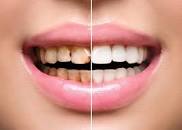RESTORATIONS
A dental restoration or dental filling is a treatment to restore the function, integrity, and morphology of missing tooth structure resulting from caries or external trauma as well as to the replacement of such structure supported by dental implants. They are of two broad types—direct and indirect—and are further classified by location and size. A root canal filling, for example, is a restorative technique used to fill the space where the dental pulp normally resides.
Restoring a tooth to good form and function requires two steps:
- Preparing the tooth for placement of restorative material or materials
- Placement of these materials.

The process of preparation usually involves cutting the tooth with a rotary dental handpiece and dental burrs or a dental laser to make space for the planned restorative materials and to remove any dental decay or portions of the tooth that are structurally unsound. If permanent restoration cannot be carried out immediately after tooth preparation, temporary restoration may be performed.
The prepared tooth, ready for placement of restorative materials, is generally called a tooth preparation. Materials used may be gold, amalgam, dental composites, glass ionomer cement, or porcelain, among others. Preparations may be intracoronal or extracoronal. Intracoronal preparations are those which serve to hold restorative material within the confines of the structure of the crown of a tooth. Examples include all classes of cavity preparations for composite or amalgam as well as those for gold and porcelain inlays. Intracoronal preparations are also made as female recipients to receive the male components of Removable partial dentures. Extracoronal preparations provide a core or base upon which restorative material will be placed to bring the tooth back into a functional and aesthetic structure. Examples include crowns and onlays, as well as veneers.
